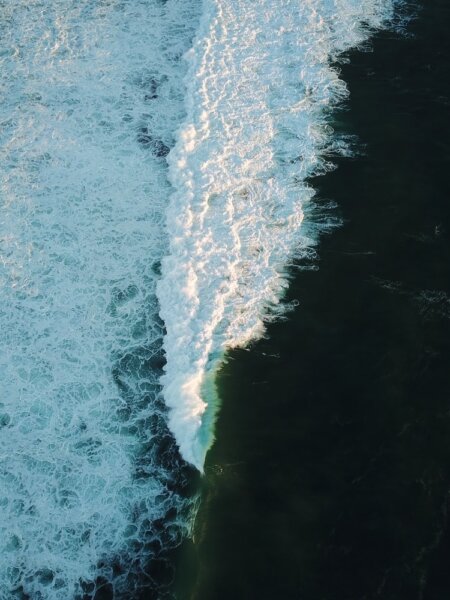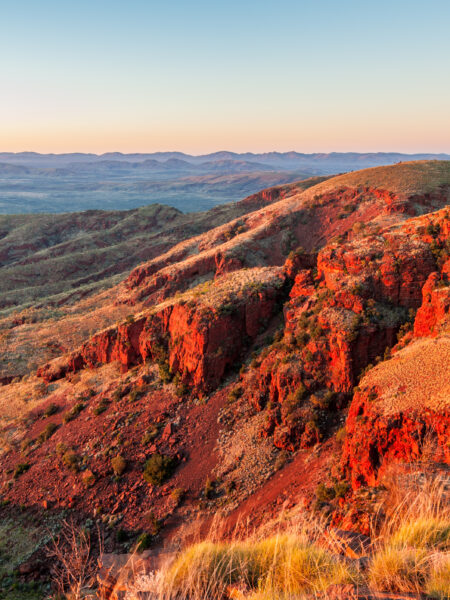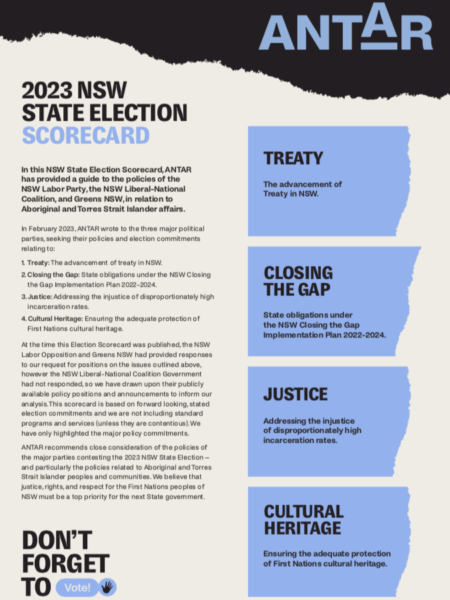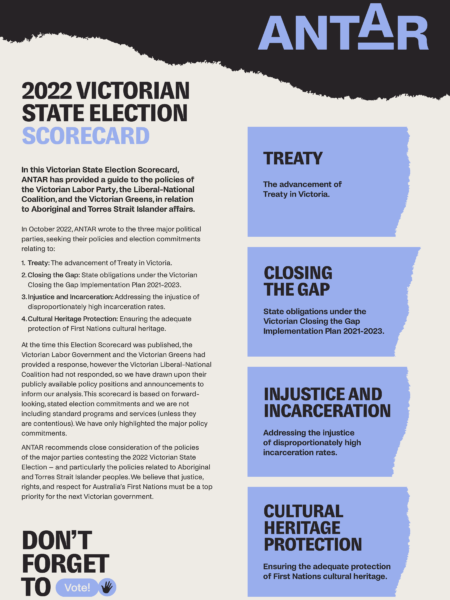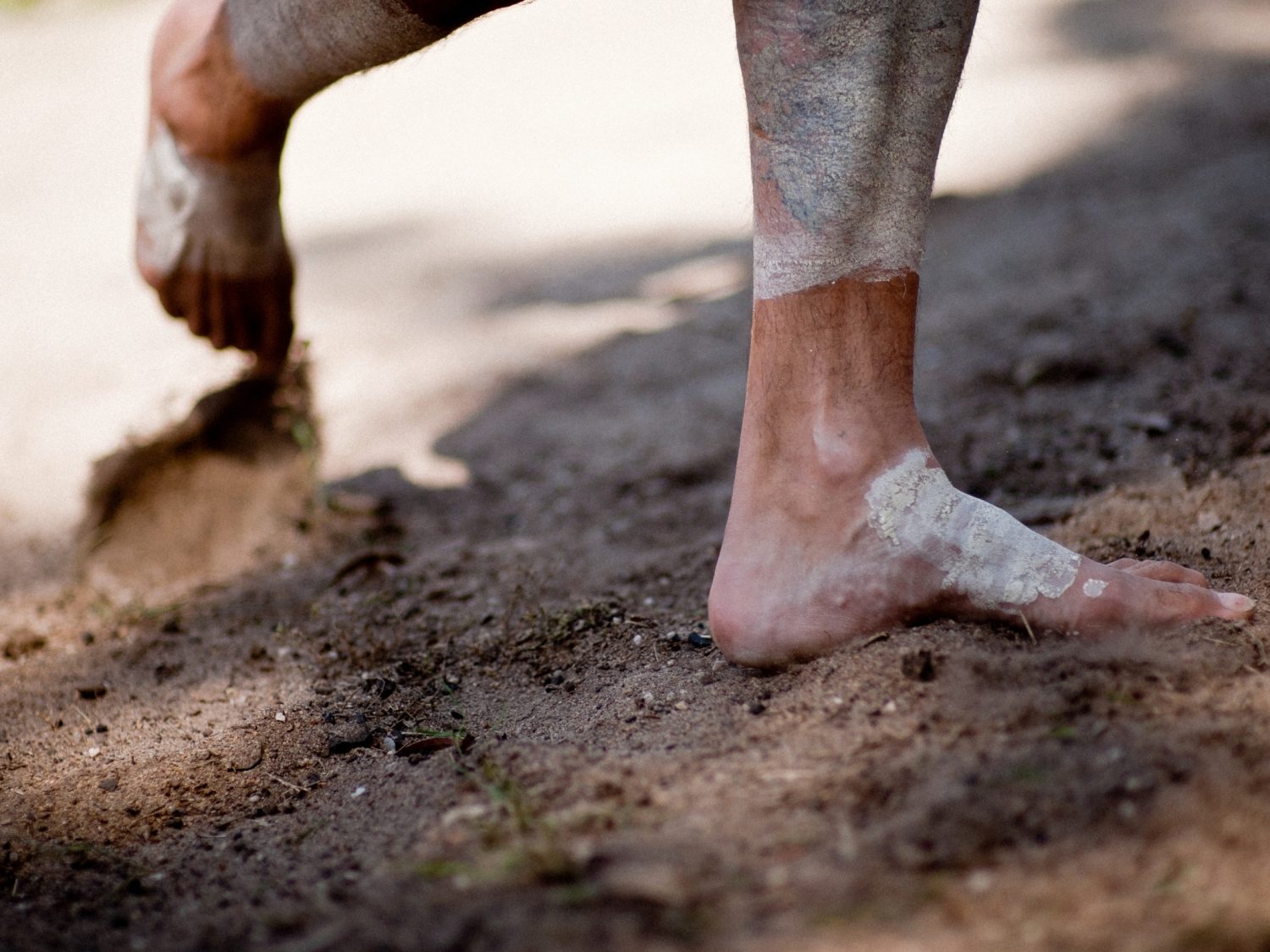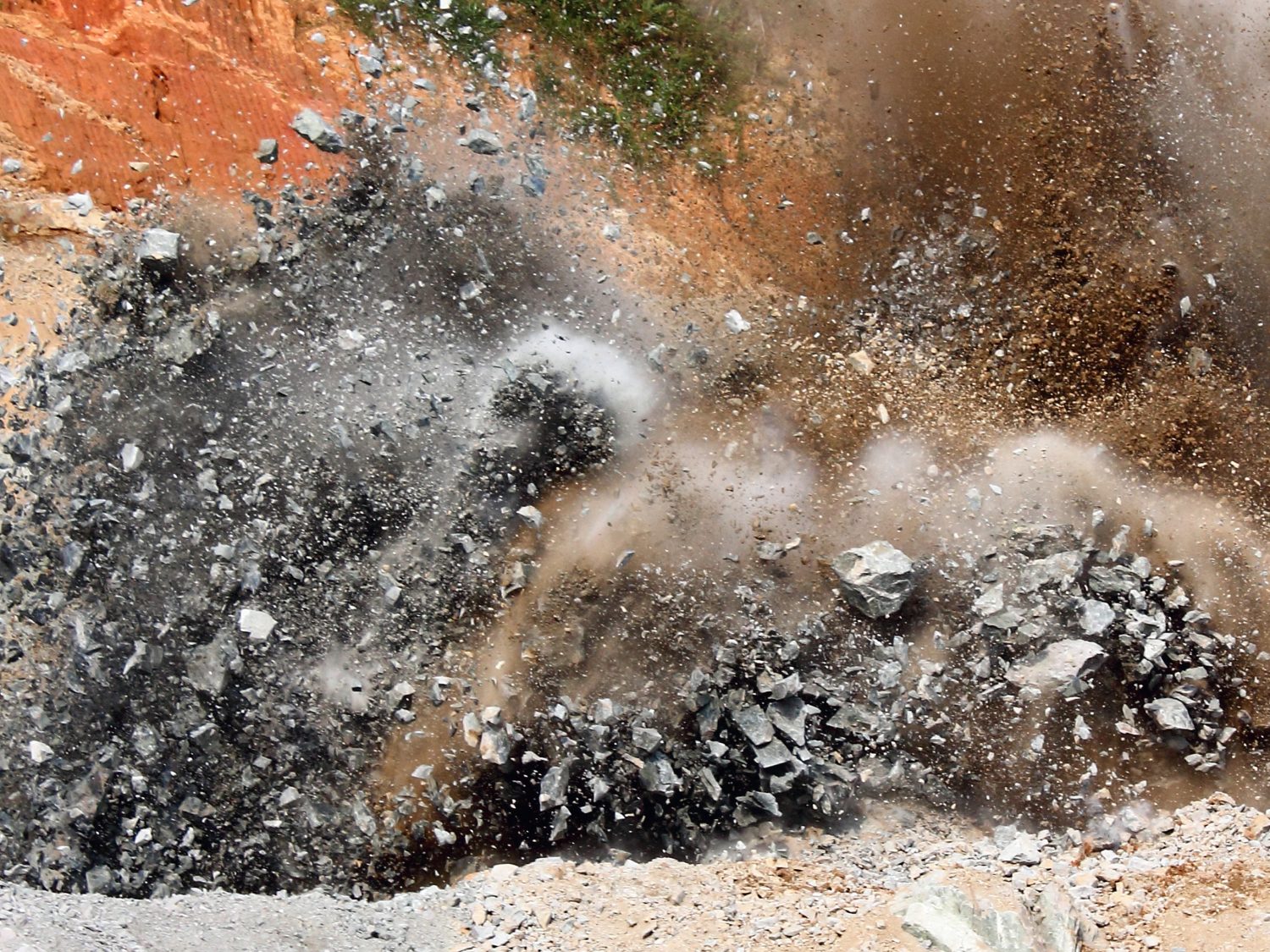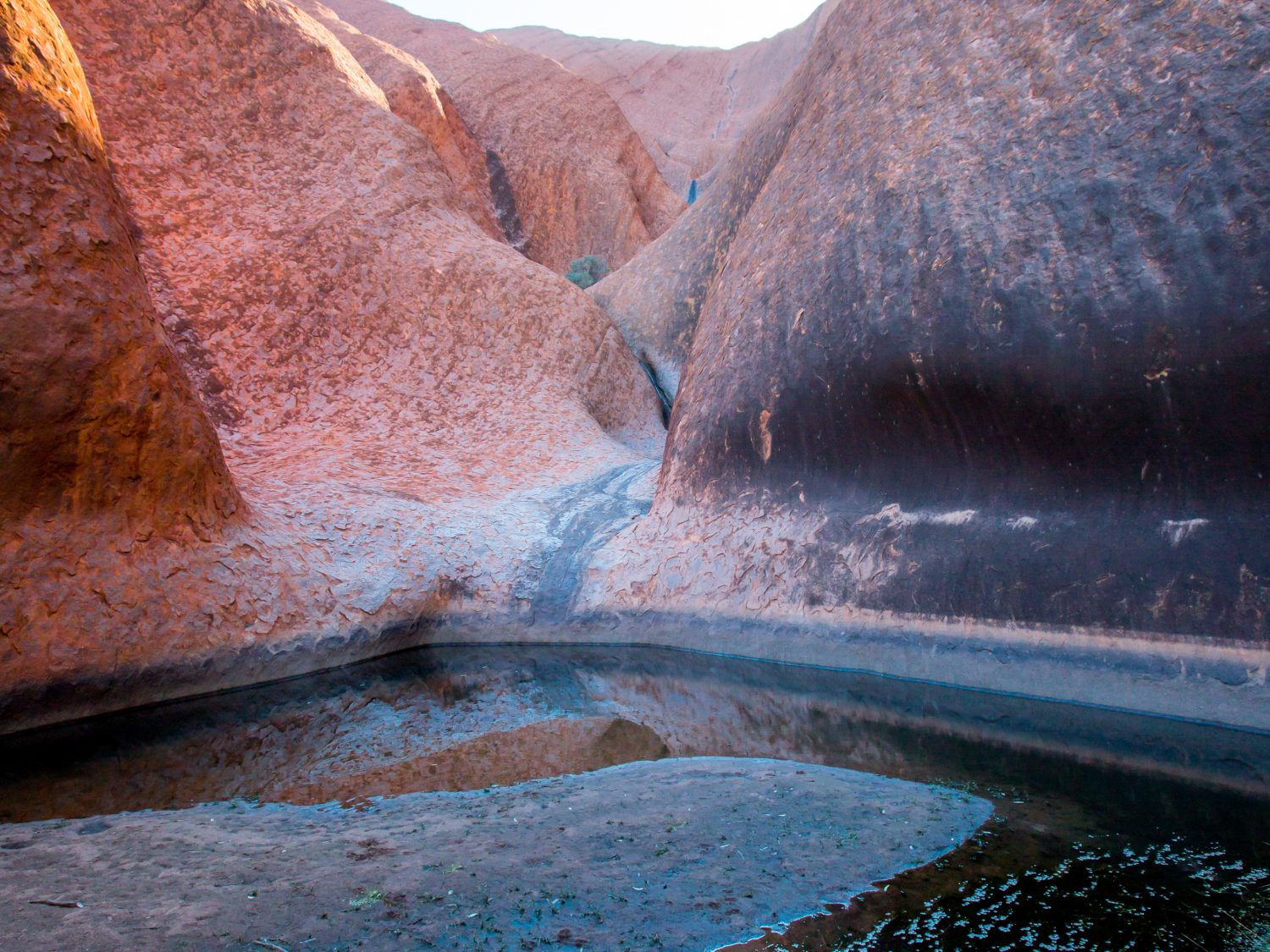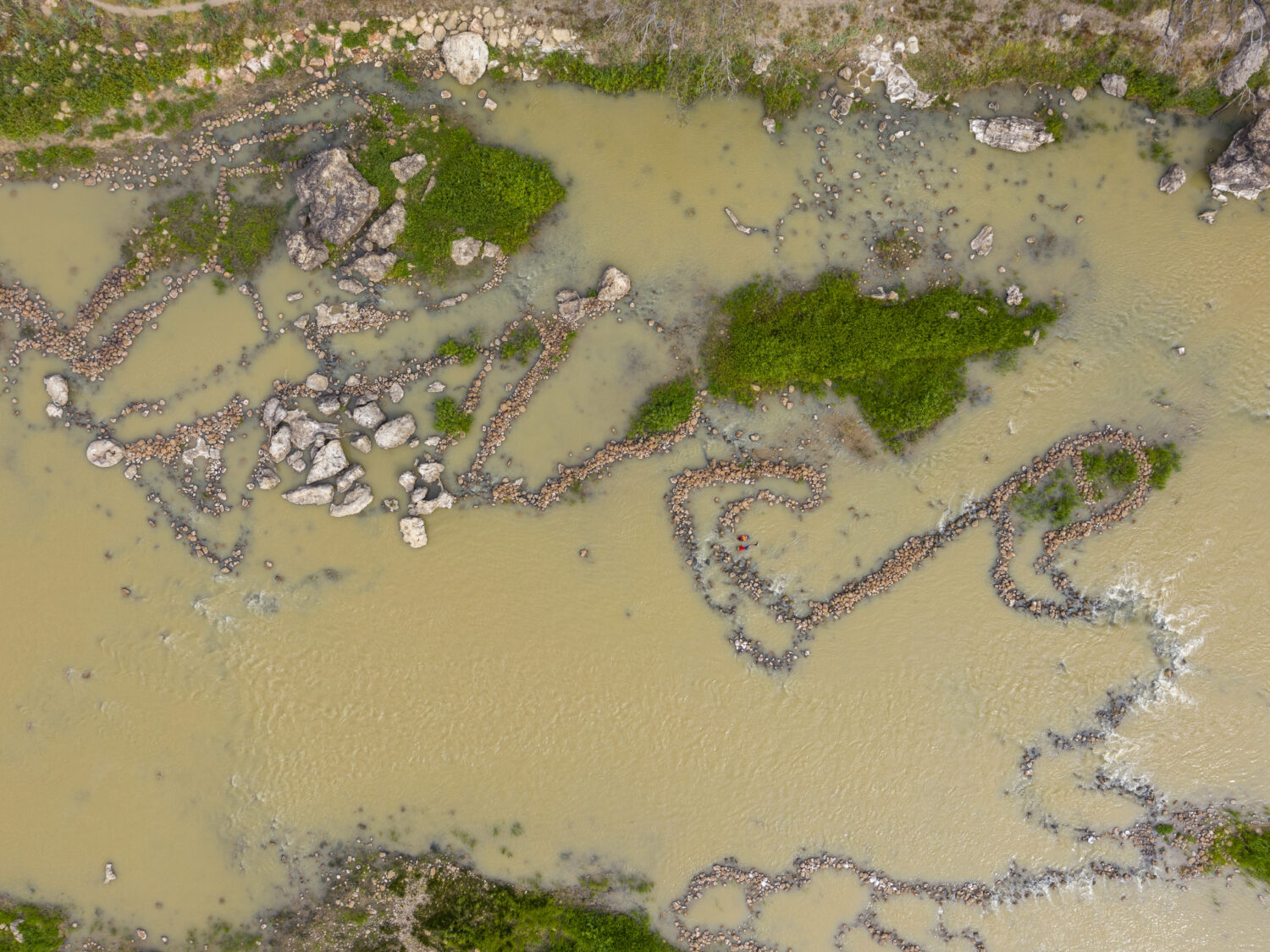This system was used in all colonies (except South Australia) for up to 70 years after 1788. Robert Hughes in his book The Fatal Shore argues that Governor George Arthur’s attempt to exterminate the Tasmanian Aboriginal people could have happened only under a European administration brutalized by the penal system.
The original inhabitants of NSW suffered the earliest and most intense colonisation. Access to land was nearly always secured by violent means over an extended period of time. Today they own only approximately one percent of the state’s land area which means that most of their cultural heritage is found on private or public lands. By contrast the NT has approximately 70% under some form of First Nations ownership.
BACKGROUND
NSW is the only jurisdiction without stand-alone Aboriginal cultural heritage legislation. First Nations people have struggled to protect their heritage through a rather complex interaction of three key laws:
The 1994 Native Title legislation ushered in a new and more powerful form of First Nations land ownership than had been in operation in NSW since 1983. In time, the NSW government needed to make various amendments to its successfully operating ALRA in order to overcome conflicts of interest between First Nations entities that already had one form of tenure but sought Native Title.
There are three other state planning and environment Acts that have had some impact on Aboriginal and Torres Strait Islander affairs. Firstly, the 1977 Heritage Act (NSW) combines First Nations and non-Indigenous matters. Another is the NSW Environmental Planning and Assessment Act 1979 (EPA), responsible for management and conservation of the state’s natural resources and cultural heritage (including Aboriginal heritage), facilitating ecologically sustainable development and protecting the environment. Finally, the Fisheries Management Act 1994 and the Fisheries Management Amendment Act 2009 and other natural resource management laws impact First Nations land rights.
Timeline
This timeline provides further historical information that impacts cultural heritage protections. It maps in more detail the struggles of First Nations peoples across the state over many decades and the state’s inadequate legislative responses to improve a system of recognition and protection. Also see ANTAR’s Cultural Heritage Protection Campaign page.
- 1969: The Aborigines Act (NSW) marked the beginning of dismantling the oppressive systems that had ruled First Nations’ lives throughout the 20th century.
- 1977: NSW Aboriginal Land Council (NSW ALC) established as an independent unfunded body established by First Nations community representatives to lobby for a statewide land rights system (later this body was brought under the Aboriginal Land Rights Act (ALRA, NSW).
- 1980: NSW Parliament Select Committee Legislative Assembly (Keane Committee) recommended a land rights system and a parallel system of local Aboriginal heritage groups.
- 1988-1989: a Ministerial taskforce consulted widely across the state, developed principles for cultural heritage legislation but failed to create change.
- 1993-1996: Aboriginal Cultural Heritage Working Group developed a Green Paper for a new cultural heritage Bill that did not receive Cabinet approval.
- 1994: ALRA NSW amendment followed the National Native Title legislation to prevent potential future conflicts between parties operating under the 1983 legislation and those seeking the new ownership avenue. Native Title claims would take precedence over land rights claims.
- 1996: National Parks and Wildlife (NPW) Amendment. Within the complex interactions between Native Title and ALRA NSW, this Amendment allowed significantly more lands to come under joint management between the state and First Nations groups. It appointed an Aboriginal Board of Management.
- 2006: Aboriginal Cultural Heritage Advisory Committee established to advise the Minister on matters related to First Nations heritage in NSW.
- 2010: Amendment to NPW Act that gave greater protection to Aboriginal heritage through heavier penalties and stricter liability clauses; upgraded the database, Aboriginal Heritage Information Management System (AHIMS); committed to review Aboriginal cultural heritage laws. The catalyst for this Amendment followed one of the most recent grievous examples of deliberate destruction of some well-known sites of the Biamanga National Park region sacred to the Yuin people.
- 2011- 2018: A series of government working parties undertook consultation, articulation of principles and draft cultural heritage legislation without success.
- 2020: Strategic statement on coal exploration and mining updated. A number of Aboriginal heritage sites have been saved through this update.
- 2021: Future of Gas exploration updated. The government claims to have cut future exploration by 77%; Review of NSW Heritage legislation April (1977) April 2021; Bill to amend NPW Act, completed but subject to much criticism.
What’s happening now?
The timeline provides evidence of glacially slow progress towards strong cultural heritage protection in NSW. The 1983 Aboriginal Land Rights Act was a substantive mechanism for delivering land justice to NSW First Nations peoples, however, determination rates are unjustly low. Of the 44,300 land claims made over available Crown lands, as of 2017, 33,261 of those were yet to be determined by the NSW Government. Similarly, since 1993 Native Title determinations have been slow and there are many Native Title claims covering half the state that await registration and determination across NSW. There has been a promise of speeded up resolutions since 2017 (Executive Summary Aboriginal land recovery).
In February 2021, a NSW Senate Committee recorded that in the previous year 84 permits to destroy cultural sites were approved under some form of Ministerial discretion. Throughout the previous five years every single Aboriginal Heritage Impact Permit (AHIP) had been approved. It is estimated that about four cultural sites are green lit for destruction each week. An AHIP is a statutory document which grants permission to harm Aboriginal objects or declared Aboriginal places and details conditions which must be complied with while harming these objects or places.
In her 2020 publication titled Cultural Vandalism: Regulated Destruction of Aboriginal Cultural Heritage in NSW, Janet Hunt concludes that greater awareness of the need for protection has led to better informed and regulated harm to that heritage sanctioned by government agencies.
Shenhua Victory
In 2015, an unlikely alliance of local First Nations groups, farmers and nation-wide environmentalists formed a coalition to fight the proposed Shenhua coal mine in northern NSW. At that time, the Gomeroi people had already been fighting for nine years seeking protection of approximately 55 sites of high cultural significance that lay in the pathway of the mine. At one of the latter stages of this legal battle the Federal government ruled in favour of the mining company. In 2021, before any further appeals got underway, the NSW government’s sudden desire to protect prime farmland and cultural heritage sites led to the conclusion of this protracted battle. After 15 years in stubborn pursuit of a mega coal-mine, the NSW government acquiesced to local political and global economic factors with a payout of $100 million to the miners in compensation.
Calga Aboriginal Cultural Landscape Victory
In 2015, the NSW Land and Environment Court ruled in favour of the Darkinjung Aboriginal Land Council (ALC) application to reject further expansion of a local sand-mining operation, reasoning that:
…environmental issues affecting a site were inseparable from Aboriginal cultural heritage.
The Council CEO noted that:
What we’ve been able to do is get the court to move away from thinking about an individual site and to start to think about the cultural landscape.
Sites of Concern
Evans Head Iron Gates
The Richmond Shire Council (and its predecessor prior to 2016 NSW council amalgamations) have sought residential development of this Northern Rivers site since the 1980s. This has been despite strong community opposition, a number of legal cases against it and a $33M lawsuit brought against it by the developer (the lawsuit was later withdrawn but with no transparency as to why). The site currently meets NSW government criteria for regional residential development.
There is another history. For the people of the Bundjalung nation it is a massacre site of 1842; the site adjoins an area where a Native Title determination was made in 2013 and proclaimed in 2021. For decades the region has also been the focus of environmental advocacy groups such as Evans Head Residents for Sustainable Development and National Parks. An independent review by the Environmental Defenders Office of the Government’s 2016 Aboriginal heritage assessment of the development site identified many inadequacies.
On the 30th August 2022, after eight years of waiting for a decision on the current application the Northern Regional Panel of the NSW Land and Environment Court rejected the developer’s proposal. However an appeal is expected and local Bundjalung and other environmental groups are preparing to fight for changing the status of this land from residential to environmental. Evans Head Residents for Sustainable Development leader Dr Gates has said that: Given the uniqueness of the survival of the complex area, (its) people, history and mythological significance, this area is part of a high cultural value site of local and national importance.
Awabakal Butterfly Cave
The Awabakal Butterfly Cave historically was a birthing site for First Nations women and continues to be a living cultural meeting place. It has been recognized as a NSW site of significance (2013) and has been declared a sacred site by the Federal Aboriginal and Torres Strait Islander Heritage Protection Act (ATSIHPA) in 2019. Despite these supposed State and Federal protections, the site continues to be threatened by housing development. The community is urgently seeking further protection.
Plains clan of the Wonnarua people seek cultural heritage protection 2021
Since the beginning of European colonisation the riches of the Hunter Valley landscapes have been relentlessly exploited, firstly for agriculture and then for extractive industries. Frontier violence between First Nations and the settlers was not uncommon. Wonnarua groups have been fighting for decades to protect an area of hallowed ground surrounding the historical Ravensworth Estate. The Ravensworth Estate building has been threatened by expansion of nearby coal mining. This area is believed to be the site of particular violence and death between settlers and the local Aboriginal people during the 1820s.
A good news win: on 28 October 2022 the NSW Indpendent Planning Commision rejected expansion of the Glendell Mine.
Raising Warragamba Dam Wall – Greater Blue Mountains Region
Since 2016, the NSW government has been pursuing investigations into a project to raise the Warragamba Dam Wall to mitigate flood damage to highly populated regions of western Sydney. Loss of precious natural and cultural heritage would be one of the outcomes of such an undertaking. The Greater Blue Mountains region is home to six traditional First Nations peoples – Darug, Gundungurra, Wiradjuri, Wanaruah, Darkinjung and Tharawal. It was inscribed as World Heritage in 2000 and today it is home to a vibrant community of Darug and Gundungurra descendants.
Opposition to the Government proposal has been growing. In 2014, approval was given to the Traditional Owners for an Indigenous Land Use Agreement (ILA); the cost to them was to withdraw a Native title application. In 2018, the community lodged a further proposal for protection. In 2019, other environmental opposition groups were formed including Give A Dam and Colong Wilderness groups.
Despite this opposition, by September 2021 the NSW Government appeared to be well advanced in the necessary assessments of this project with publication of its Environmental Impact Statement (EIS). Public exhibition of the September 20221 EIS and the government call for submissions to it, resulted in 2067 submissions of which only 2% supported the raising of the wall. In October 2022 the NSW Premier declared the Warragamba Dam project to be critical infrastructure.
Since then further serious criticisms about the validity of various aspects of the project have been published; from Scientific reviews, International World Heritage conventions, the NSW Government Select Committee hearings and advocacy websites that oppose the project. The NSW Government is pursuing its commitment to the project, reporting on a modified Environmental Impact Statement and asking again for public submissions by 12 December 2022. It is expected that definitive approval for the Warragamba Dam Wall Raising project is months away and will require Federal sign off.
Aboriginal Cultural Heritage (Culture is Identity ) Bill 2022
In a move quite separate to the NSW Government’s cultural heritage reform agenda (see timeline above) a Private Member’s Bill was brought to the Parliament in June 2022. It is a comprehensive attempt to develop a new framework for the recognition, protection and conservation of Aboriginal cultural heritage in NSW. A key reform proposed is the establishment of an Aboriginal Cultural Heritage Council that appears to put First Nations people in the driver’s seat, i.e. a Council comprised of Aboriginal people that has the ‘ultimate say on whether or not a site, object or remains of Aboriginal heritage may be altered, damaged, or destroyed’.
The NSW Aboriginal Land Council (NSWALC) provides a brief summary of the bill and supports it saying it’s a substantial improvement on current laws, largely incorporates the Land Council’s reform principles and offers an opportunity for long overdue meaningful change.
The NSW Government Upper House Enquiry committee is currently examining the Bill. The Committee’s Report has been delivered to the Parliament by 8 November 2022. This suggests that there could be a parliamentary vote on this Bill before the NSW State election expected early in 2023.
Take Action
- Recognise Traditional Owners as authorities at the table at the beginning of any application for development on lands owned by First Nations communities;
- There is a need for an overarching Commonwealth legislative framework and consistent State legislative protections;
- Reform must be based on the heritage standards already agreed;
- Reform must adhere to relevant articles of the United Nations Declaration of Indigenous Rights (UNDRIP); and
- Reform must find the balance in the battle between economic development and preservation of cultural heritage. Urgent and comprehensive reform in NSW is required. A personal, well crafted letter is still an effective way to hold our politicians to account.
Further Reading

